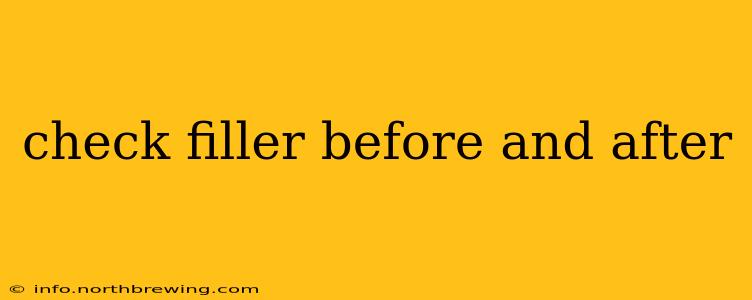Checking for Filler Words: Before and After
Filler words—those extra words and phrases that don't add meaning to a sentence—are the bane of clear, concise writing. They clutter your prose, making it sound hesitant and unprofessional. Identifying and removing them is crucial for effective communication, whether you're crafting a business report, a blog post, or a casual email. This guide will show you how to check for filler words both before and after you write, ensuring your writing is polished and impactful.
Before You Write: Setting the Stage for Concise Prose
The best way to avoid filler words is to prevent them from appearing in the first place. Here's how to prepare for concise writing before you even start typing:
-
Outline Your Ideas: Before you begin writing, create a detailed outline. This helps organize your thoughts and ensures you have a clear path to follow, reducing the need for on-the-spot filler words as you write.
-
Know Your Audience: Understanding your audience helps you tailor your language and tone. Knowing who you're speaking to will help you choose precise language and avoid unnecessary explanations.
-
Choose Your Words Carefully: Consider synonyms and stronger verbs. A strong verb can often replace a weaker verb plus a filler word. For instance, instead of "really important," try "crucial" or "essential."
-
Use a Thesaurus Strategically: A thesaurus is a great tool, but don't just grab the first synonym you see. Choose words that accurately convey your meaning and fit the overall tone of your writing.
After You Write: Editing for Clarity and Conciseness
Once your first draft is complete, it's time for the critical process of editing and refining your work. Here's how to identify and remove filler words after you've written:
-
Read Aloud: Reading your writing aloud forces you to hear the rhythm and flow of your sentences. Filler words often sound unnatural and disruptive when spoken.
-
Look for Common Filler Words: Pay close attention to common culprits like "um," "like," "just," "very," "really," "actually," "basically," "so," "you know," and "I think."
-
Use a Grammar and Style Checker: While not perfect, tools like Grammarly can often flag unnecessary words and suggest improvements.
-
Focus on Strong Verbs and Nouns: Strong verbs and nouns carry more weight than weak ones, making your writing more dynamic and less reliant on filler words.
-
Eliminate Redundancies: Remove phrases that repeat the same idea. For instance, instead of "completely and totally finished," simply say "finished."
Frequently Asked Questions (FAQs)
What are some examples of filler words to avoid?
Common filler words include "like," "um," "uh," "you know," "just," "really," "very," "actually," "basically," "so," "obviously," "kind of," and "sort of." These words often don't add meaning and can weaken your writing.
How can I improve my writing's conciseness?
Conciseness comes from careful word choice and sentence structure. Use strong verbs and nouns, avoid redundant phrases, and eliminate unnecessary adjectives and adverbs. Practice reading your work aloud to identify awkward phrasing and filler words.
What are the benefits of removing filler words?
Removing filler words improves clarity, conciseness, and professionalism. It makes your writing more impactful and easier to understand, leading to more effective communication.
By following these steps both before and after writing, you can significantly reduce filler words, resulting in clearer, more impactful, and more professional writing. Remember, concise writing is powerful writing.
